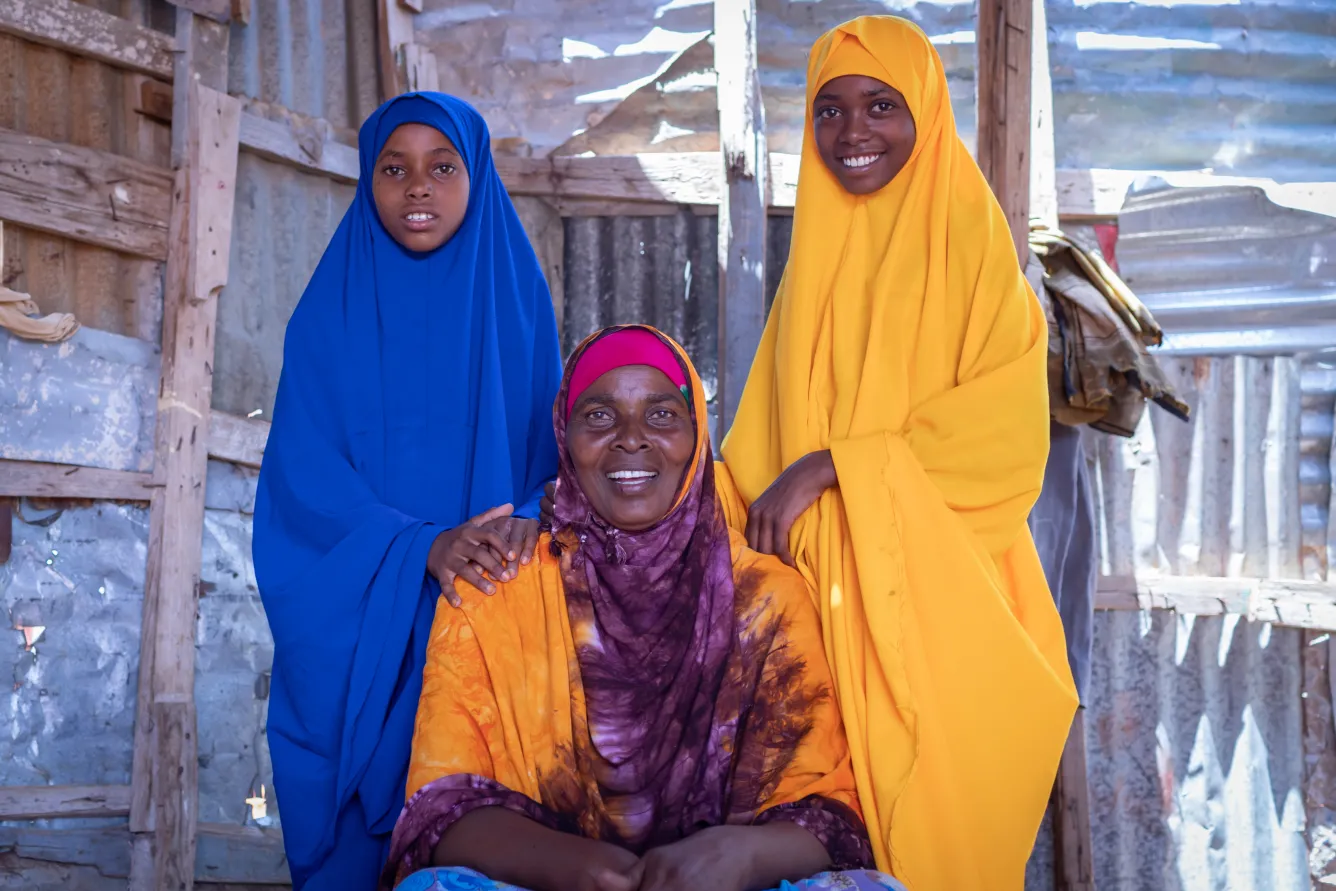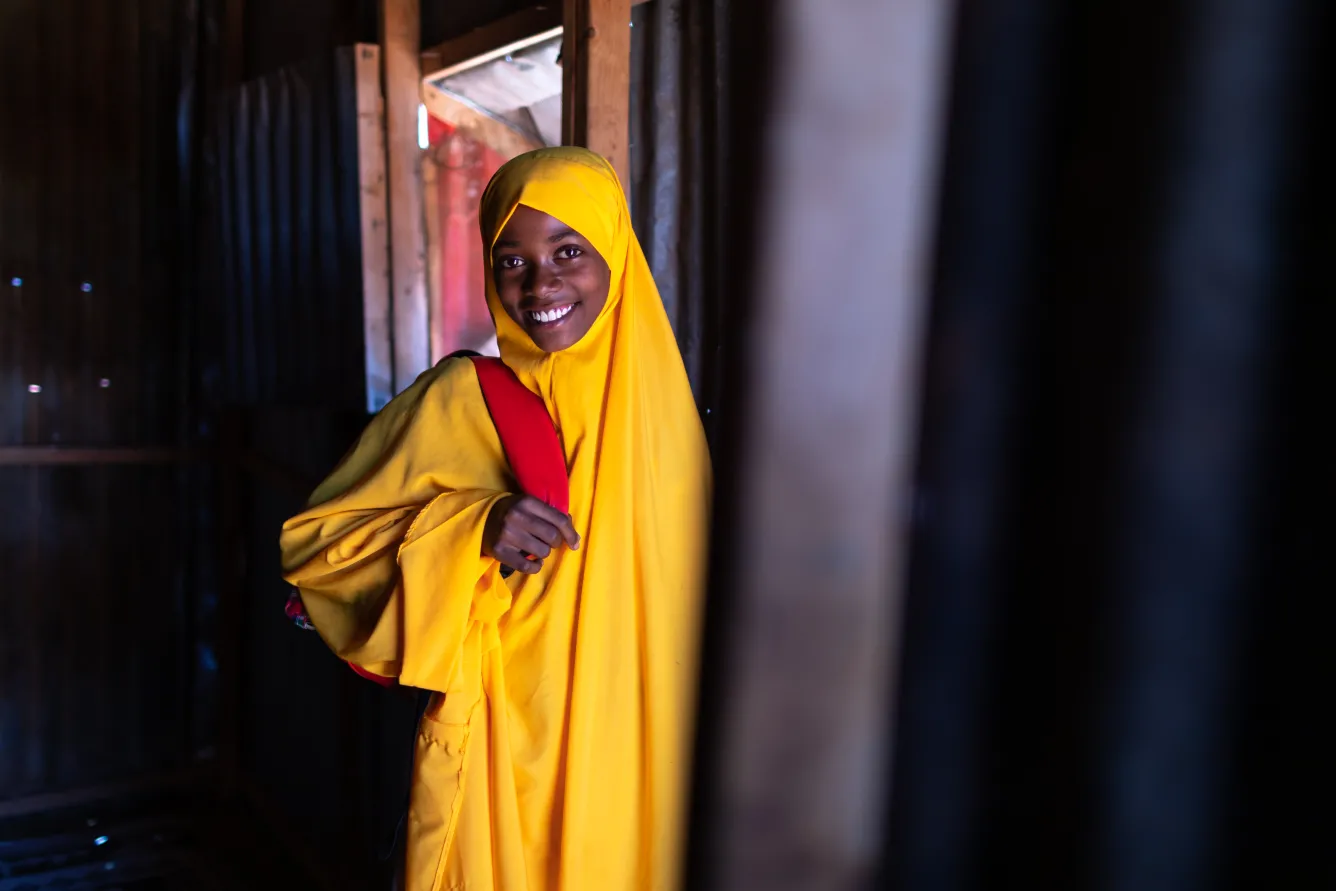After the trauma of displacement, education offers hope
Xaar-Xaar, Galmudug State of Somalia
Habiba Hussein Ali had lived through droughts before, so when the seasonal rains failed and her maize withered on the stalk, “it was difficult but not devastating,” she said. Devastation followed. As the months without rain went on, her livestock sickened and died until all that remained was the dust blowing across the bone-dry fields of her once-thriving farm in southwestern Somalia.
“When I think back, I cry inside,” said Habiba. “I had a good life. There is nothing better than raising your own livestock and growing your own crops.” Only when Habiba and her family had lost everything did they join the exodus of people fleeing hunger. “We tried to persevere, but the drought was so severe, we could not resist,” she said.
Worldwide, 117 million people have been forced to flee their homes; three out of five are “internally displaced” or uprooted within their own countries. In Somalia, the number of internally displaced is 3.9 million, meaning a fifth of the population has stories like Habiba’s of lives upturned by conflict, drought or flood.
As the conflicts that have wracked Somalia for the last three decades gradually ebb and political stability grows, climate change has become the new driver of displacement, with cycles of drought and flood coming with greater frequency and severity. The drought that forced Habiba to abandon her home in 2017 was followed by another in 2023.
Displacement is a benign term for a traumatic experience. Still, in a country like Somalia, where essential services such as healthcare and schooling are sparse, it can mean being further from danger and closer to the support that allows people to start again if they survive.

A terrible journey
Over months, Habiba and her family mainly travelled on foot from their village near Baidoa to Galkayo, roughly the same distance as walking from Ottawa to Philadelphia. The journey was humiliating for a proud couple who had so recently prospered. She and her husband were forced to beg for food and work in a town along the way. “It was a very painful experience, one that we never thought we would have, to raise a hand for help,” she said.
Much worse was to come. Weakened by hunger, three of Habiba’s children succumbed to cholera before her exhausted husband, Aden, also fell ill and soon died. “The pain was severe,” Habiba said, wiping tears from her eyes. “What I endured during that journey was terrible.”
For the six hard and lonely years that have followed, Habiba, who is now 41, has strived to rebuild a life for her surviving children in Xaar-Xaar, a windblown scrubland 11 kilometres south of Galkayo. She washes clothes for a living while her 17-year-old son Yunus contributes by working as a shoeshine in town. Those determined efforts, Habiba said, are the reason that her 12-year-old daughter, Hawa, was able to become the first in the family to attend school.
In a country where four million children are not in school, displacement has, for many, meant the opportunity to enroll in education for the first time, especially girls who are commonly at the back of the queue when parents decide which child to educate.
“I never thought a child of mine would take a pen and write her name,” said Habiba with a broad smile. “I am the proudest mother every day when Hawa goes to school!”
Education was never a possibility before, nor even a thought: there was no school in the village, and the best hope for a young girl like Hawa was to follow in her mother’s footsteps, working the land, marrying young and having many children to help share the burden of survival.
Now, a different path has opened up. “I have great hope in Hawa that she will someday assist all of us. She may become a doctor or a teacher and benefit the whole family through her education,” said Habiba.

‘I want to repay them’
After doing the morning chores – making tea and canjeero sorghum pancakes – Hawa walks the half an hour to Mustaqbal School in her bright hijab accompanied by her nine-year-old sister Aniso who has also enrolled. The school is one of 66 in Galmudug state that are part of UNICEF’s UNdaunted programme, supported by the Government of Canada, to help educate girls, paying for their school uniforms and menstrual pads so they do not miss school during their periods and contributing to teacher salaries. The education ministry pays the remainder of salaries, meaning the school does not need to charge fees, and lunch is also provided, increasing the incentives for parents to send their children regularly.
Hawa studies hard during the school day and, at break times, laughs and plays with her friends as they chase one another around the sandy school campus or skip rope. Both she and her younger sister are joyful, carefree children. They are quick to smile and seem not to carry the weight of the family’s tragedy. Instead, that burden was borne by Habiba and Yunus, who sacrificed a lot to provide the girls with the opportunity of education.
“Whatever I have suffered, I hope that Hawa and Aniso one day will take care of the family, and I can rest,” said Habiba.
Her older daughter shares this vision but carries the responsibility lightly. “I love going to school because I want to support my family in future,” Hawa said. “I would like to become a nurse or a doctor to help others if they get sick, but especially my brother and mother because they are the people who led me to go to school. I want to repay them.”
